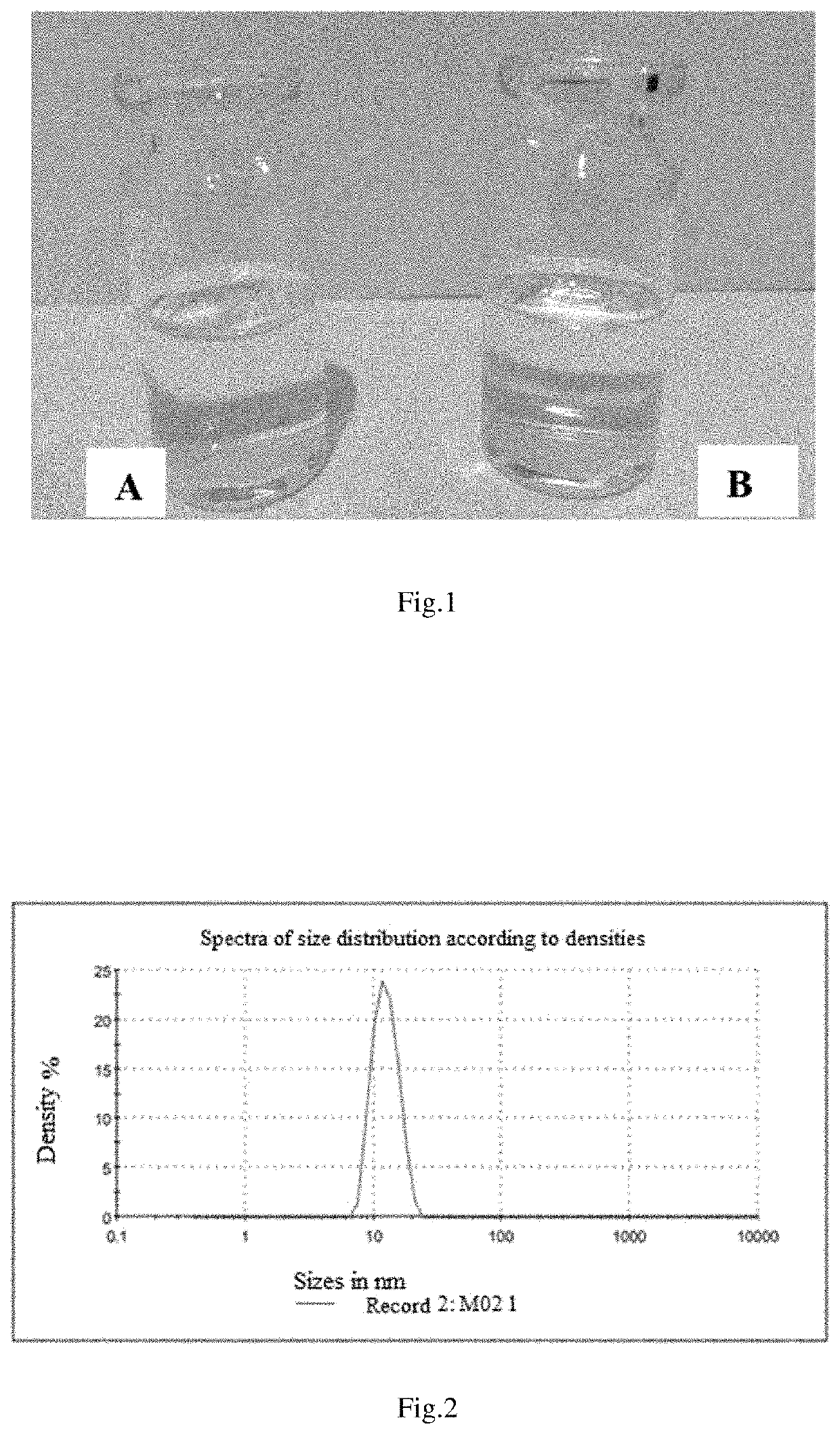Process for producing a nano omega-3 microemulsion system
a microemulsion system and nano technology, applied in the field of nano omega-3 microemulsion system, can solve the problems of low bioavailability if used, low water-soluble effectiveness, and easy denature, and achieve the effects of increasing the utility effect of omega-3 active agents, increasing bioavailability, and increasing absorption ability
- Summary
- Abstract
- Description
- Claims
- Application Information
AI Technical Summary
Benefits of technology
Problems solved by technology
Method used
Image
Examples
examples
Example: Production of 100 ml of Nano Omega-3 Microemulsion System
[0030]Preparing a dispersion phase by stirring 10 g Omega-3 at speed of 400 rpm, simultaneously heated to a temperature of 50° C.
[0031]Preparing a carrier: 30 ml of PEG was heated to 60° C. 30 ml of the carrier was added to the above-prepared dispersal phase, this dispersal phase continued to be heating to 60° C., stirred at a speed of 600 rpm, in vacuum. A homogeneous mixture was prepared by mixing the dispersal phase, a mixture of PEG carrier and emulsifier ACRYSOL K-140 (60 ml) in an emulsifying equipment LSP-500 with a frequency of 20 KHz at a stirring speed of 600 rpm, at 80° C., continued to be stirring at a speed of 600 rpm for 4 hours, in vacuum. Controlling the quality of resulting product by dissolving into water and measuring the transparency, if it fails then continuing heating and measuring this transparency every 30 minutes until it is observed to be transparent, the reaction is quenched, the temperature...
PUM
| Property | Measurement | Unit |
|---|---|---|
| temperature | aaaaa | aaaaa |
| temperature | aaaaa | aaaaa |
| size | aaaaa | aaaaa |
Abstract
Description
Claims
Application Information
 Login to View More
Login to View More - R&D
- Intellectual Property
- Life Sciences
- Materials
- Tech Scout
- Unparalleled Data Quality
- Higher Quality Content
- 60% Fewer Hallucinations
Browse by: Latest US Patents, China's latest patents, Technical Efficacy Thesaurus, Application Domain, Technology Topic, Popular Technical Reports.
© 2025 PatSnap. All rights reserved.Legal|Privacy policy|Modern Slavery Act Transparency Statement|Sitemap|About US| Contact US: help@patsnap.com

